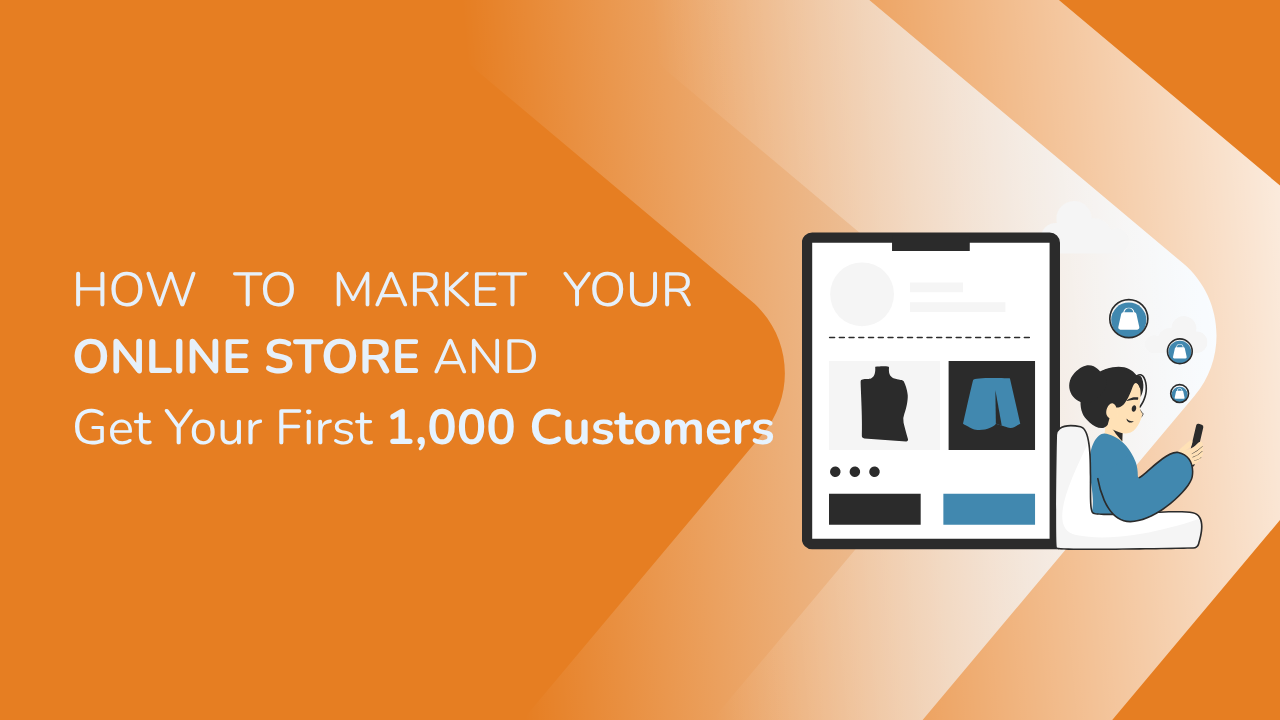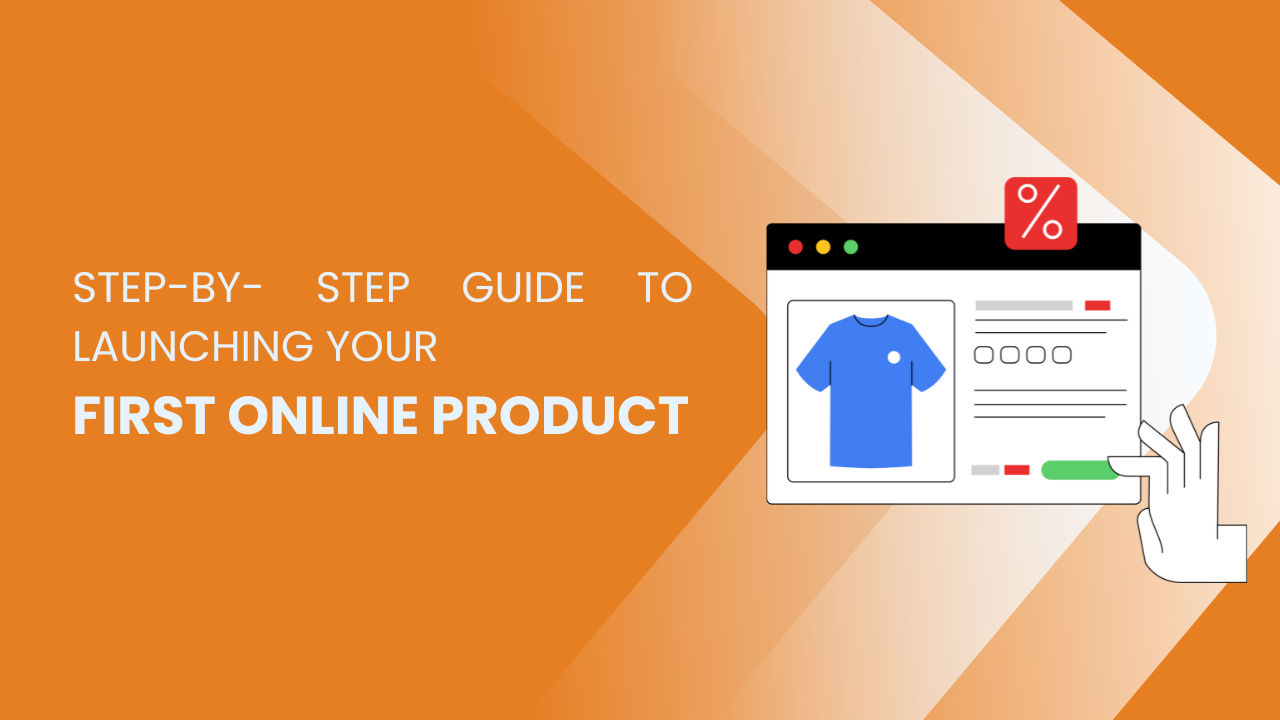Share this Article
Introduction: Embracing the Digital Entrepreneurship Era
The rise of the digital age has dramatically transformed how businesses operate. No longer confined to physical storefronts or rigid office structures, modern entrepreneurs are increasingly turning to home-based online businesses to carve out their financial independence. Operating a business from home offers unparalleled flexibility, reduced overhead costs, and the opportunity to reach a global market. Yet, despite these advantages, the path is fraught with challenges requiring strategic planning, discipline, and continuous learning. For anyone embarking on this journey, understanding the nuances of online business operations is crucial to achieving long-term success.
A home-based online business can encompass a wide variety of models. From e-commerce stores selling physical products, to digital services, consulting, affiliate marketing, and content creation, the options are nearly limitless. The flexibility of these models allows entrepreneurs to align their ventures with personal skills, interests, and market demand. However, without a solid foundation, even the most promising ideas can fail. This article explores comprehensive strategies and actionable tips for building, managing, and scaling a successful home-based online business.
Understanding Your Business Model
One of the first steps in running a home-based online business is identifying the right business model. Entrepreneurs often make the mistake of chasing trends without considering personal expertise or the feasibility of sustaining the venture. There are several common models that have proven effective for home-based operations. E-commerce, for example, enables sellers to market physical products directly to consumers through platforms like Shopify, Etsy, or Amazon. Dropshipping is a popular variation, allowing sellers to manage an online store without holding inventory, thereby reducing financial risk.
Service-based models are also highly effective for home entrepreneurs. Freelancers and consultants can leverage skills in writing, marketing, graphic design, programming, or business strategy to offer services globally. Platforms such as Upwork, Fiverr, and LinkedIn provide access to a broad client base. Digital products—including courses, e-books, and software—offer another lucrative avenue, often requiring an initial time investment but minimal ongoing overhead. Choosing the right model hinges on understanding market demand, personal strengths, and scalability potential. A well-chosen business model sets the stage for sustainable growth and profitability.
Creating a Professional Online Presence
A robust online presence is essential for establishing credibility and attracting customers. A professionally designed website serves as the hub for all business activities, offering information about products, services, and company values. For those on a tight budget, website builders like WordPress, Wix, and Squarespace provide cost-effective solutions with customizable templates. In addition to the website, leveraging social media platforms such as Facebook, Instagram, LinkedIn, and TikTok is crucial for visibility, customer engagement, and brand building.
Effective branding extends beyond visual aesthetics. Clear messaging, consistent tone, and a compelling value proposition are critical for distinguishing your business from competitors. Providing high-quality content—whether through blogs, videos, or social media posts—positions the entrepreneur as an authority in their niche and fosters trust among potential customers. Furthermore, search engine optimization (SEO) enhances discoverability by ensuring the business ranks well in search engine results, driving organic traffic without significant advertising costs.
Managing Time and Productivity
One of the unique challenges of running a home-based online business is maintaining discipline in a non-traditional work environment. The flexibility of working from home can easily lead to distractions and reduced productivity if not managed properly. Establishing a dedicated workspace separate from living areas is essential for focus. Clear boundaries between work and personal life help maintain mental clarity and prevent burnout.
Time management tools and strategies are invaluable for optimizing productivity. Utilizing digital calendars, task management apps like Trello or Asana, and time-tracking software ensures tasks are prioritized and deadlines are met. Breaking work into manageable blocks, adopting the Pomodoro technique, and setting daily goals foster efficiency. Additionally, scheduling regular breaks and maintaining healthy routines, including exercise and proper nutrition, support long-term productivity and well-being.
Marketing Strategies for Home-Based Businesses
Understanding Your Target Audience
Marketing is the lifeblood of any online business, and understanding your target audience is the foundation of effective marketing. Many home-based entrepreneurs make the mistake of adopting a “one-size-fits-all” approach, hoping to appeal to everyone. In reality, focusing on a clearly defined audience dramatically improves engagement, conversion, and loyalty. Start by identifying demographics, interests, and pain points of potential customers. Surveys, social media insights, and competitor analysis provide valuable information.
By understanding your audience’s preferences and behaviors, you can tailor messaging, offers, and marketing channels to maximize impact. For example, younger audiences may respond better to social media campaigns or influencer marketing, while professionals may prefer email newsletters or LinkedIn outreach. Crafting buyer personas helps streamline marketing efforts, ensuring that resources are invested wisely and campaigns are more effective.
Leveraging Social Media Marketing
Social media has transformed the way businesses connect with customers. Platforms such as Facebook, Instagram, TikTok, and LinkedIn allow home-based entrepreneurs to reach audiences globally at minimal cost. Effective social media marketing involves a mix of content types, including informative posts, engaging visuals, behind-the-scenes insights, and customer testimonials.
Consistency is key. Posting regularly not only keeps your audience engaged but also improves algorithmic visibility. Using hashtags, geo-tags, and trending topics can enhance discoverability, while paid advertising options like Facebook Ads and Instagram Promotions offer targeted reach to potential buyers. Engaging with followers through comments, direct messages, and polls creates a community around your brand, strengthening customer relationships and trust.
Content Marketing and Storytelling
Content marketing is a powerful tool for establishing authority, building trust, and generating leads. High-quality blog posts, videos, podcasts, and infographics provide value to your audience while promoting your products or services subtly. Storytelling plays a central role in content marketing, allowing your brand to resonate emotionally with potential customers. Sharing your journey, challenges, and successes humanizes your business, making it relatable and memorable.
Effective content marketing requires planning and consistency. Creating an editorial calendar ensures that content is produced regularly, aligns with marketing goals, and addresses the needs of your audience. SEO-driven content ensures that your articles, blogs, and videos rank on search engines, attracting organic traffic that can convert into loyal customers over time.
Email Marketing: Building Long-Term Relationships
While social media garners attention, email marketing remains one of the most reliable methods for nurturing leads and converting customers. Collecting email addresses through website subscriptions, lead magnets, and social campaigns enables direct communication with your audience. Personalized emails, newsletters, and exclusive offers keep customers informed and engaged, encouraging repeat purchases and brand loyalty.
Segmentation is critical in email marketing. By grouping subscribers based on interests, purchase history, or engagement levels, you can send tailored messages that resonate more effectively. Automated email campaigns, such as welcome sequences, abandoned cart reminders, and post-purchase follow-ups, save time while driving conversions. Regularly analyzing open rates, click-through rates, and customer feedback allows continuous optimization for better results.
Collaborations and Influencer Marketing
Partnerships and influencer collaborations can amplify your reach, particularly for home-based businesses seeking credibility and recognition. Collaborating with influencers in your niche introduces your brand to engaged and relevant audiences. Micro-influencers, with smaller but highly engaged followings, often provide better ROI than major celebrities, as their audiences trust their recommendations more.
Joint ventures with other businesses can also create win-win opportunities. Sharing audiences through co-hosted webinars, collaborative products, or bundled offers can expand reach while fostering industry relationships. Successful collaborations are based on shared values, complementary audiences, and mutual benefit, ensuring long-term positive outcomes for both parties.
Paid Advertising and Retargeting
While organic marketing is powerful, paid advertising provides a faster path to visibility and sales. Google Ads, Facebook Ads, and Instagram Ads allow precise targeting based on demographics, interests, and behavior. Retargeting campaigns focus on individuals who have previously interacted with your website or social media, reminding them of products they viewed but did not purchase.
Monitoring metrics such as cost-per-click, conversion rate, and return on ad spend is essential to ensure that advertising budgets are used effectively. Testing different ad formats, messages, and audience segments enables entrepreneurs to optimize campaigns and achieve maximum results without overspending.
Financial Management and Budgeting
Importance of Financial Planning
Financial management is the backbone of any business, and for home-based online ventures, it is even more critical. Unlike traditional businesses, home-based entrepreneurs often mix personal and business finances, which can lead to confusion and poor decision-making if not properly managed. A clear understanding of income, expenses, profits, and losses is essential to make informed decisions, plan for growth, and ensure long-term sustainability.
Financial planning begins with creating a detailed budget that outlines expected revenues and expenditures. This includes costs related to website hosting, marketing, software tools, product sourcing, shipping, and taxes. Having a well-defined budget helps avoid overspending, ensures that resources are allocated efficiently, and provides a roadmap for achieving financial goals.
Separating Personal and Business Finances
One of the most common mistakes home-based entrepreneurs make is mixing personal and business finances. Using a single bank account for both purposes can create accounting headaches, make tax filing complicated, and obscure profitability. Opening a dedicated business bank account ensures transparency and allows for accurate tracking of income and expenses.
Additionally, using accounting software such as QuickBooks, Xero, or Wave can simplify bookkeeping. These tools automatically categorize transactions, generate invoices, and produce financial reports, allowing entrepreneurs to monitor cash flow, evaluate business performance, and make data-driven decisions.
Cash Flow Management
Cash flow is the lifeblood of any business. Even profitable businesses can struggle if cash flow is mismanaged. For home-based online businesses, it is vital to monitor the timing of income and expenses carefully. Delayed customer payments or unexpected expenses can disrupt operations if cash flow is not planned proactively.
Maintaining a cash reserve is a practical strategy to manage fluctuations in revenue. Setting aside a portion of profits for emergencies, tax payments, and future investments ensures stability. Additionally, negotiating favorable payment terms with suppliers and using invoicing strategies to encourage prompt customer payments can further enhance cash flow reliability.
Cost Reduction and Efficient Resource Allocation
Home-based businesses benefit from reduced overhead, but there are still costs that must be managed effectively. Entrepreneurs should identify essential expenditures and eliminate unnecessary expenses. For example, opting for free or low-cost software tools, leveraging open-source platforms, or automating repetitive tasks can significantly reduce costs.
Outsourcing non-core activities, such as graphic design, bookkeeping, or digital marketing, can also be cost-effective. By paying for expertise only when needed, entrepreneurs save time and avoid the overhead associated with full-time employees. Prioritizing spending on activities that directly contribute to revenue growth ensures that resources are allocated efficiently.
Pricing Strategies for Profitability
Pricing is a critical component of financial management. Setting prices too low may attract customers but can erode profitability, while excessively high prices may limit market reach. Entrepreneurs must consider production or acquisition costs, market demand, competitor pricing, and perceived value when establishing prices.
Value-based pricing is particularly effective for home-based businesses. This approach considers the benefits and outcomes customers receive from a product or service rather than just costs. Offering tiered pricing options, discounts for bulk purchases, or subscription models can also enhance revenue while appealing to different segments of the target audience.
Tax Planning and Compliance
Even home-based businesses are subject to taxes, and failure to comply can result in penalties and financial strain. Understanding local tax laws, filing deadlines, and applicable deductions is essential for legal compliance and financial health. Keeping accurate records of all income and expenses simplifies tax preparation and ensures that deductions are not overlooked.
Consulting with a tax professional or accountant can provide clarity, especially for entrepreneurs navigating complex tax situations, multiple revenue streams, or cross-border transactions. Proactive tax planning reduces surprises, ensures compliance, and allows for more effective budgeting throughout the year.
Tracking Performance and Adjusting Financial Strategies
Continuous monitoring of financial performance allows entrepreneurs to make informed decisions and adjust strategies when necessary. Key metrics include revenue growth, profit margins, customer acquisition costs, and return on investment for marketing campaigns. Regularly reviewing these metrics helps identify trends, uncover inefficiencies, and optimize operations.
Using financial dashboards or analytics tools provides a visual representation of business performance, making it easier to spot opportunities and address challenges. By treating financial management as a dynamic, ongoing process rather than a one-time task, home-based entrepreneurs can maintain control over their business and achieve long-term growth.
Customer Service and Retention
The Importance of Customer Service
In a home-based online business, customer service can make or break your reputation. Unlike physical stores, online businesses lack face-to-face interactions, which means every communication—emails, messages, or chat support—represents your brand. Exceptional customer service not only resolves issues but also builds trust, fosters loyalty, and encourages word-of-mouth referrals.
Customer expectations are high in the digital age. Fast responses, clear communication, and personalized attention are no longer optional—they are essential. Businesses that consistently exceed expectations differentiate themselves from competitors and create lasting relationships with their clients.
Communication Channels and Responsiveness
Multiple communication channels should be available to customers, including email, live chat, social media messaging, and phone support if feasible. Prompt responses demonstrate professionalism and concern for customer satisfaction. Even automated responses can enhance perceived responsiveness, as long as they provide helpful guidance and a timeline for follow-up.
Personalizing communication adds an extra layer of care. Using the customer’s name, referencing previous interactions, and addressing specific concerns shows that your business values each individual rather than treating them as a number.
Handling Complaints and Negative Feedback
No business is immune to complaints, but how you handle them can transform a negative experience into an opportunity for loyalty. Respond calmly, empathize with the customer’s perspective, and offer practical solutions. Acknowledging mistakes, providing timely resolutions, and following up to ensure satisfaction can turn dissatisfied customers into long-term advocates.
Negative reviews, when addressed professionally, can also enhance credibility. Publicly demonstrating problem-solving skills reassures other potential customers that your business is reliable and responsive.
Building Customer Loyalty
Customer retention is far more cost-effective than acquisition. Implementing loyalty programs, offering repeat-purchase incentives, and providing exclusive deals to returning customers encourages continued engagement. Simple gestures, like personalized thank-you notes or occasional discounts, strengthen emotional connections and reinforce the value of your brand.
Collecting and analyzing customer feedback helps identify patterns, preferences, and pain points, allowing you to tailor offerings and improve service. Engaging customers in product development, surveys, or beta programs creates a sense of community and increases investment in your brand’s success.
Creating a Seamless Customer Experience
A seamless customer experience encompasses every touchpoint, from website navigation to order fulfillment and post-purchase follow-up. A user-friendly website with clear product descriptions, easy checkout processes, and secure payment options minimizes frustration and boosts conversion rates. Transparent policies regarding shipping, returns, and refunds build trust and reduce uncertainty.
Packaging and delivery are also crucial. Thoughtful presentation, timely shipping, and accurate order fulfillment create memorable experiences that encourage repeat purchases. Even small details, such as branded packaging or handwritten notes, enhance perceived value and customer satisfaction.
Leveraging Technology for Customer Service
Technology can enhance efficiency and service quality. Customer Relationship Management (CRM) tools track interactions, preferences, and purchase history, enabling personalized marketing and support. Chatbots and automated email sequences handle common queries, freeing time for more complex tasks.
Analytics tools provide insight into customer behavior, identifying patterns such as frequent complaints, abandoned carts, or high-value clients. Leveraging these insights allows entrepreneurs to proactively improve service, anticipate needs, and build stronger relationships with their audience.
Turning Customers into Advocates
Satisfied customers often become your most effective marketers. Encouraging reviews, testimonials, and referrals amplifies credibility and reach without additional marketing expenditure. Social proof, including user-generated content and influencer endorsements, reinforces trust in your brand.
Rewarding loyal customers for referrals or repeat purchases strengthens these relationships further. A business that consistently delivers value, listens to its customers, and resolves issues efficiently creates a loyal community that supports sustainable growth.
Tools, Technology, and Automation
Embracing Technology for Efficiency
Running a home-based online business requires wearing multiple hats—marketing, customer service, operations, finance, and more. Leveraging technology is essential to manage these responsibilities efficiently and scale without compromising quality. The right tools reduce repetitive tasks, minimize errors, and free up time for strategic activities that grow your business.
From project management software to analytics platforms, digital tools empower entrepreneurs to streamline operations, improve decision-making, and maintain a professional presence. Selecting tools that align with your business model, workflow, and budget ensures maximum value.
Project Management and Organization
Organization is critical for productivity, especially when managing multiple tasks across different areas. Project management tools like Trello, Asana, Monday.com, or ClickUp help track tasks, deadlines, and team collaborations. These platforms allow entrepreneurs to prioritize work, visualize progress, and maintain accountability.
Creating structured workflows reduces stress and prevents important tasks from being overlooked. By breaking projects into smaller, manageable tasks, entrepreneurs can maintain focus and ensure consistent progress toward goals. Additionally, integrating calendars, reminders, and notifications helps balance workload and deadlines effectively.
Accounting and Financial Tools
Accurate financial tracking is vital for sustainability and growth. Accounting software such as QuickBooks, Xero, FreshBooks, or Wave simplifies bookkeeping, tracks expenses, and generates financial reports. These tools automate invoicing, tax calculations, and payment reminders, saving significant time and reducing errors.
For entrepreneurs with multiple revenue streams, these platforms consolidate financial data, providing a clear overview of profitability. Integration with payment gateways and e-commerce platforms ensures smooth financial operations and accurate reporting.
Marketing Automation
Marketing automation tools help home-based entrepreneurs manage campaigns efficiently while delivering consistent messaging. Platforms like Mailchimp, ActiveCampaign, HubSpot, and ConvertKit automate email sequences, social media posting, and lead nurturing.
Automation enables personalized communication at scale, such as sending welcome emails to new subscribers, abandoned cart reminders, and follow-up messages after purchases. This not only increases engagement and conversion but also reduces the manual workload, allowing entrepreneurs to focus on strategy and creativity.
Customer Relationship Management (CRM)
A CRM system is essential for managing customer interactions and fostering long-term relationships. Tools such as Salesforce, HubSpot CRM, Zoho CRM, or Pipedrive centralize customer information, track communication history, and segment audiences for targeted campaigns.
CRM platforms help entrepreneurs provide personalized support, anticipate customer needs, and identify opportunities for upselling or cross-selling. By understanding customer behavior and preferences, businesses can enhance satisfaction, loyalty, and lifetime value.
E-Commerce and Sales Platforms
For online sellers, e-commerce platforms like Shopify, WooCommerce, BigCommerce, and Etsy provide end-to-end solutions for product listing, inventory management, and payment processing. Integration with shipping services and marketplaces simplifies order fulfillment and expands reach.
For service-based businesses, platforms like Fiverr, Upwork, or Kajabi (for digital products and courses) offer specialized tools to manage client interactions, deliver services, and collect payments. Choosing the right platform ensures operational efficiency and a smooth customer experience.
Communication and Collaboration Tools
Even solo entrepreneurs benefit from communication and collaboration tools. Zoom, Microsoft Teams, Slack, and Google Workspace facilitate virtual meetings, document sharing, and real-time collaboration with team members, freelancers, or partners.
Effective communication tools minimize misunderstandings, improve workflow, and ensure that projects move forward efficiently. For home-based businesses, these tools bridge the gap between remote operations and professional standards.
Data Analytics and Insights
Understanding business performance through data is crucial for decision-making. Analytics tools, such as Google Analytics, social media insights, and e-commerce reporting dashboards, track traffic, engagement, conversion rates, and sales patterns.
Analyzing these metrics identifies strengths, weaknesses, and opportunities for growth. Data-driven decisions enhance marketing effectiveness, improve customer experiences, and optimize operational strategies. Automation of reporting further saves time and ensures entrepreneurs remain focused on strategic priorities.
Scaling with Automation
As the business grows, automation becomes indispensable. Tasks like inventory updates, social media posting, email marketing, invoicing, and customer support can be automated to maintain efficiency. Automation tools not only save time but also reduce human error and ensure consistency.
For example, chatbots handle common customer inquiries, reducing response time. Automated payment reminders minimize late payments. Workflow automation tools like Zapier or Integromat connect different applications, enabling seamless data transfer and task execution without manual intervention.
Scaling and Growth Strategies
Planning for Growth
Scaling a home-based online business requires careful planning and a strategic mindset. Growth is not just about increasing sales—it involves improving efficiency, expanding your reach, and enhancing the value you provide to customers. A clear growth strategy ensures that expansion does not compromise quality or overwhelm existing operations.
The first step in planning for growth is defining clear objectives. Are you aiming to increase revenue, expand product offerings, enter new markets, or grow your team? Setting measurable goals allows you to track progress and make data-driven decisions. Entrepreneurs should also anticipate challenges such as cash flow limitations, operational bottlenecks, and market competition when planning for growth.
Leveraging Outsourcing and Team Expansion
One of the most effective ways to scale is to delegate tasks that are time-consuming or require specialized skills. Outsourcing functions such as graphic design, content creation, bookkeeping, and customer support allows entrepreneurs to focus on core business activities. Freelance platforms like Upwork, Fiverr, and Toptal provide access to skilled professionals at competitive rates.
As the business grows, hiring a small team—either remote or part-time—can further increase capacity. Defining roles clearly, setting expectations, and establishing efficient workflows ensures that team members contribute effectively. Delegation not only saves time but also allows entrepreneurs to focus on strategic decisions that drive long-term growth.
Expanding Product and Service Offerings
Diversification is a key strategy for sustainable growth. Introducing new products or services that complement existing offerings can attract new customers and increase revenue from current clients. Conducting market research and analyzing customer feedback helps identify gaps and opportunities for expansion.
It’s important to balance innovation with quality. Launching new offerings gradually, testing demand, and adjusting based on customer response minimizes risk. Bundling products, creating premium versions, or introducing subscription models are additional strategies to enhance profitability while meeting customer needs.
Strategic Partnerships and Collaborations
Collaborations with other businesses, influencers, or industry leaders can accelerate growth. Joint ventures, co-branded products, affiliate programs, and influencer marketing expand reach and credibility. Successful partnerships are built on shared goals, complementary audiences, and mutual benefit.
Networking with industry peers also provides access to new ideas, resources, and potential customers. Attending online webinars, virtual conferences, and business forums enhances knowledge, creates connections, and opens doors for strategic alliances.
Investing in Marketing and Brand Building
Growth requires consistent investment in marketing and brand development. Scaling advertising campaigns, leveraging social media, and producing high-quality content ensure your business reaches wider audiences. Paid campaigns should be continuously monitored, optimized, and aligned with growth objectives to maximize return on investment.
Brand building is equally important. A strong brand creates recognition, trust, and loyalty. Investing in professional branding, cohesive visual identity, and consistent messaging strengthens your market presence and supports long-term growth.
Optimizing Operations for Scalability
Efficient operations are critical when scaling. Streamlining workflows, automating repetitive tasks, and using integrated systems prevent bottlenecks. For example, connecting e-commerce platforms with inventory management, accounting, and marketing tools ensures smooth operations as sales increase.
Inventory management becomes crucial for product-based businesses. Forecasting demand, maintaining stock levels, and optimizing supply chains prevent delays and lost revenue. For service-based businesses, implementing standardized procedures and digital tools ensures consistent delivery of high-quality services as client volume grows.
Tracking Performance and Adjusting Strategies
Scaling requires constant evaluation. Monitoring key performance indicators (KPIs) such as revenue growth, profit margins, customer acquisition cost, and customer retention rates provides insight into progress. Analytics and reporting tools enable entrepreneurs to identify successful initiatives and areas needing improvement.
Flexibility is essential. Strategies may need to be adjusted in response to market trends, customer preferences, or operational challenges. A proactive approach, combined with continuous learning and experimentation, allows home-based businesses to scale sustainably without sacrificing quality or customer satisfaction.
Preparing for Long-Term Sustainability
Long-term growth is not solely about immediate profit; it involves building a resilient business model. This includes diversifying income streams, maintaining strong customer relationships, investing in technology, and planning for potential risks. A sustainable business adapts to changing market conditions while consistently delivering value to customers.
Developing a growth mindset—viewing challenges as opportunities, continuously learning, and embracing innovation—ensures that your home-based business evolves over time. By combining strategic planning, efficient operations, and strong customer focus, entrepreneurs can achieve meaningful growth and long-term success.
Conclusion: Building a Successful Home-Based Online Business
Running a home-based online business is both an exciting and challenging journey. It offers unmatched flexibility, the opportunity to reach global markets, and the potential for financial independence. However, success requires more than just a great idea; it demands careful planning, disciplined execution, and continuous adaptation.
From selecting the right business model to establishing a professional online presence, managing finances, delivering exceptional customer service, leveraging technology, and implementing growth strategies, every aspect contributes to the overall sustainability and success of the venture. Entrepreneurs must remain focused, adaptable, and proactive, learning from challenges while seeking opportunities for innovation and improvement.
Ultimately, a successful home-based online business is built on a foundation of strategic decision-making, customer-centric practices, and efficient use of tools and resources. By combining creativity, diligence, and resilience, entrepreneurs can transform their home-based ventures into thriving businesses that offer both personal fulfillment and financial rewards.
Success is not instantaneous—it is the result of consistent effort, smart planning, and a willingness to learn. Home-based entrepreneurs who embrace these principles can create businesses that grow, adapt, and thrive in the ever-evolving digital landscape, turning their vision into a lasting reality.
Categories:
E-commerce Tips & Tutorials
Tags:
Online Store in Nepal
,
TIPS







